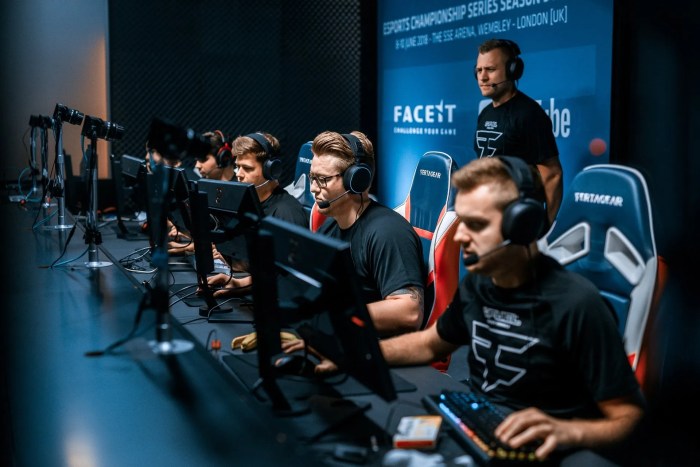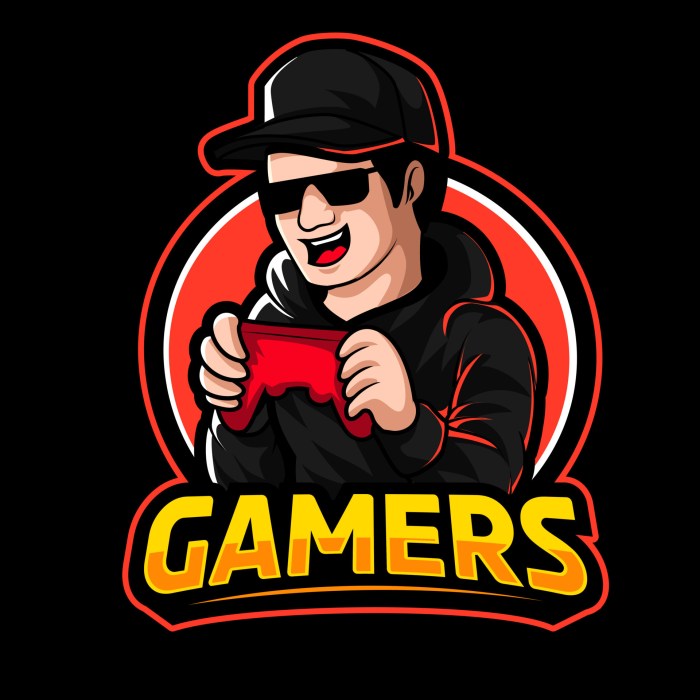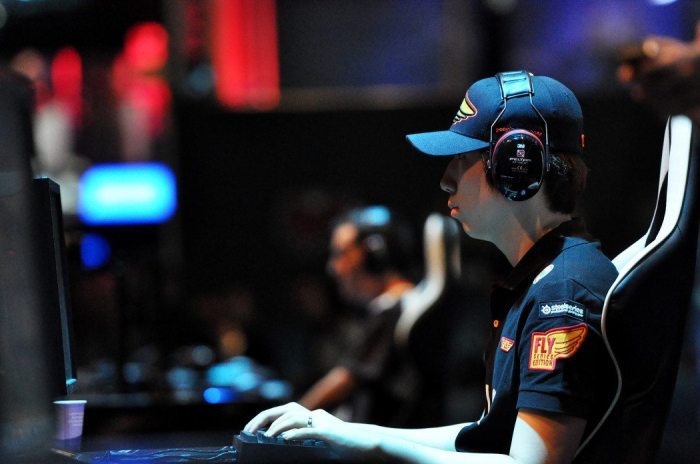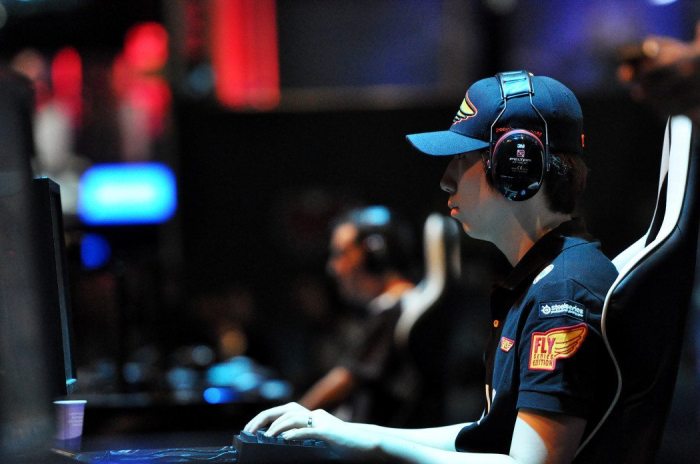Pro Gamers: They’re not just gamers; they’re athletes, entertainers, and entrepreneurs. This isn’t your average weekend gaming session; we’re talking about a global industry with millions of fans, lucrative sponsorships, and intense competition. From the high-pressure world of esports tournaments to the ever-growing landscape of streaming and content creation, we’ll explore what it truly means to be a professional gamer in today’s digital age.
We’ll unpack the skills, the training, the business side, and even the challenges faced by those who’ve made gaming their career. Think insane reflexes, strategic brilliance, and the mental fortitude to handle immense pressure – all while navigating the complex world of team dynamics, sponsors, and the ever-changing digital landscape. Get ready to level up your understanding of the pro gaming scene.
Defining “Pro Gamers”

So, you wanna be a pro gamer? It sounds glamorous, right? But the reality is a blend of intense skill, dedication, and often, a hefty dose of luck. Let’s break down what it
actually* means to be a professional gamer.
A professional gamer, or pro gamer, is an individual who earns a significant portion of their income, often their primary income, through competitive video gaming. This income comes from a variety of sources, including tournament winnings, sponsorships, streaming revenue, and salaries from esports organizations. Beyond the financial aspect, pro gamers dedicate a substantial amount of their time and energy to training, practicing, and competing at the highest level of their chosen game.
Their lifestyle often revolves around their gaming career, demanding rigorous schedules and significant personal sacrifices.
Skill Levels and Income Sources
Professional gamers possess exceptional skill and game knowledge far exceeding the average player. Their mastery isn’t just about reflexes; it involves strategic thinking, teamwork (in team-based games), adaptability, and the ability to perform under immense pressure. Income, as mentioned, is multifaceted. Tournament prize pools can reach millions of dollars in major esports events like The International (Dota 2) or The League of Legends World Championship.
Sponsorships from gaming hardware companies, energy drink brands, and apparel manufacturers are common, providing additional income streams. Live streaming on platforms like Twitch and YouTube allows pro gamers to generate revenue through subscriptions, donations, and advertisements. Finally, some pro gamers are employed full-time by esports organizations, receiving a salary and benefits.
Role and Responsibilities Across Game Genres
The roles and responsibilities of a pro gamer vary significantly depending on the game genre. In First-Person Shooters (FPS) like Counter-Strike: Global Offensive or Valorant, individual skill and aim are paramount. Teamwork is crucial, but individual performance heavily influences the outcome. In Multiplayer Online Battle Arenas (MOBAs) such as League of Legends or Dota 2, strategic team composition, lane control, and coordinated objective-taking are key.
Pro players in MOBAs often specialize in specific roles, requiring deep understanding of their champion’s abilities and team synergy. Real-Time Strategy (RTS) games like StarCraft II demand exceptional multitasking, macro-management of resources, and micro-management of units. Pro RTS players need to anticipate opponents’ strategies and adapt quickly to changing battlefield conditions.
Paths to Becoming a Professional Gamer
There’s no single, guaranteed path to becoming a pro gamer. Many start by playing competitively at a younger age, honing their skills through countless hours of practice and participation in smaller tournaments. Some leverage their online presence, building a following through streaming and engaging with the community. Others join established esports organizations through tryouts or scouting. Many pro gamers start by participating in amateur tournaments and online leagues, gradually climbing the competitive ladder and gaining recognition.
Success often requires a combination of natural talent, unwavering dedication, and a bit of luck in encountering opportunities and connecting with the right people within the esports ecosystem. Networking and building a strong online presence are increasingly important aspects of a successful career path.
The Pro Gaming Ecosystem

The professional gaming industry isn’t just about skilled players; it’s a complex ecosystem involving teams, leagues, sponsors, and publishers, all working together (and sometimes against each other!) to create and sustain a multi-billion dollar market. Understanding this ecosystem is key to understanding the success (and sometimes the struggles) of pro gamers. Think of it like a highly competitive sports league, but with even more moving parts.The structure of the pro gaming industry is multifaceted and constantly evolving.
At its core are the players themselves, organized into teams that compete in various leagues and tournaments. These teams are often managed by organizations that provide resources like coaching, training facilities, and support staff. Sponsors, ranging from gaming hardware companies to energy drink brands, provide crucial funding, and publishers play a significant role by creating and licensing the games that these players compete in.
This intricate web of relationships drives the industry’s growth and profitability.
Team Structures and Operations
Professional gaming teams operate much like traditional sports teams. They have rosters of players, coaches who develop strategies and train players, managers who handle business affairs, and analysts who review gameplay and identify areas for improvement. Larger organizations might even have dedicated content creators to boost their brand and engage with fans. The organizational structure varies depending on the size and resources of the team, but the core functions remain consistent.
For example, Team Liquid, a prominent esports organization, has a vast infrastructure supporting its various teams across multiple games. They have dedicated staff for each team, including coaches, analysts, and managers, ensuring each player receives the necessary support to perform at their peak.
Leagues and Tournament Structures
Professional gaming leagues provide a structured competitive environment for teams to compete. These leagues often have regular seasons, playoffs, and championship tournaments with substantial prize pools and media coverage. Examples include the League of Legends Championship Series (LCS) and the Dota 2 Pro Circuit. The structure of these leagues varies widely; some operate on a franchise model, while others utilize a more open qualification system.
The League of Legends system, for example, operates on a franchise model, offering more stability and financial security to participating teams. Conversely, Dota 2’s system features open qualifiers, allowing more teams to compete for a chance to rise to the top.
Sponsors and Their Role
Sponsors are vital to the financial health of the pro gaming ecosystem. They provide funding to teams, players, and leagues, enabling the creation of high-quality events and broadcasts. Sponsorships often involve brand integration into team branding, player apparel, and tournament broadcasts. Major sponsors in esports include companies like Red Bull, Logitech, and Twitch. These sponsorships not only provide financial support but also increase the visibility and reach of the esports industry.
For instance, Red Bull’s consistent sponsorship of esports events and teams has significantly contributed to the overall awareness and growth of the sector.
Publisher Involvement and Game Development
Game publishers play a crucial role by developing and licensing the games that pro gamers compete in. They often organize major tournaments and leagues, driving engagement and viewership. Publishers also invest heavily in marketing and promoting these games within the esports community. Riot Games, for example, has been instrumental in the growth of League of Legends esports through its extensive investment in the LCS and its global tournament structure.
This close relationship between publishers and the competitive scene ensures the long-term health and growth of the respective esports titles.
Typical Career Progression of a Pro Gamer, Pro Gamers
The path to becoming a pro gamer is rarely linear. It often involves years of dedicated practice, participation in smaller tournaments, and building a reputation within the gaming community. A typical progression might look like this: This simplified flowchart depicts a common progression. It’s crucial to remember that this is a general guideline, and individual paths can vary significantly.
Many aspiring pros never reach the highest levels of competition.
Skills and Training of Pro Gamers

Becoming a pro gamer isn’t just about racking up high scores; it demands a unique blend of skills, intense training, and unwavering dedication. Success in the competitive gaming world hinges on a combination of innate talent and meticulously honed abilities, coupled with a robust approach to physical and mental well-being. Think of it like elite athletics – only the most disciplined and skilled rise to the top.Pro gamers need more than just lightning-fast reflexes.
They require a sophisticated understanding of strategy, game mechanics, and their opponents. Adaptability is key, as is the ability to maintain focus under immense pressure. The competitive landscape is constantly evolving, requiring continuous learning and adaptation to new strategies, patches, and meta-shifts. Furthermore, strong communication and teamwork are essential for coordinated gameplay, especially in team-based games.
Key Skills and Attributes of Pro Gamers
Exceptional reaction time and hand-eye coordination are foundational, allowing for precise and rapid execution of in-game actions. Strategic thinking, including the ability to analyze opponents’ moves and predict their strategies, is paramount. Adaptability and problem-solving skills are crucial for navigating unexpected situations and responding effectively to changing game dynamics. Mental fortitude, resilience, and the ability to manage stress are vital for maintaining peak performance under pressure, particularly during high-stakes tournaments.
Finally, effective communication and teamwork, especially in team-based games, are essential for coordinated and successful gameplay. These skills are often honed through rigorous training and practice.
The Importance of Physical and Mental Health in Maintaining Peak Performance
Maintaining peak performance in professional gaming requires a holistic approach to health. Physical health, often overlooked, is crucial. Pro gamers often spend countless hours seated, leading to potential issues like carpal tunnel syndrome, eye strain, and back problems. Regular exercise, stretching, and maintaining a healthy diet are essential for preventing these issues and maintaining physical well-being. Similarly, mental health is paramount.
The intense pressure of competition, coupled with long hours of gameplay, can lead to burnout and stress. Strategies like mindfulness, meditation, and adequate sleep are crucial for maintaining mental sharpness and emotional resilience. Many pro teams now incorporate professional coaching for both physical and mental wellness into their training programs. Ignoring these aspects can significantly impact a player’s performance and longevity in the competitive scene.
Common Training Methods Used by Pro Gamers
| Training Method | Description | Benefits | Potential Drawbacks |
|---|---|---|---|
| Practice Regimens | Intensive, structured practice sessions focusing on specific skills, strategies, or map knowledge. Often involves replay analysis and personalized drills. | Improved reaction time, enhanced skill execution, deeper game understanding. | Risk of burnout, repetitive strain injuries, potential for stagnation if not varied. |
| Strategic Analysis | Reviewing past matches, identifying strengths and weaknesses, analyzing opponent strategies, and developing counter-strategies. Often involves reviewing game data and using specialized software. | Improved decision-making, refined strategies, better understanding of opponent tendencies. | Time-consuming, requires analytical skills, may lead to overthinking during gameplay. |
| Teamwork Exercises | Structured practice sessions focused on improving communication, coordination, and synergy within a team. Often involves mock tournaments and simulated high-pressure scenarios. | Improved team cohesion, enhanced communication, better coordination during gameplay. | Requires strong team dynamics, can be challenging to coordinate schedules, may highlight team weaknesses. |
Query Resolution: Pro Gamers
What’s the average lifespan of a pro gamer’s career?
It varies wildly depending on the game, the player’s skill, and their ability to adapt. Some might peak early and retire relatively young, while others have longer, more sustained careers.
How do pro gamers deal with burnout?
Many prioritize mental and physical health through therapy, exercise, and taking breaks from gaming. Strong support systems within teams and organizations are also crucial.
Are there age restrictions for pro gaming?
There aren’t universal age restrictions, but many leagues have minimum age requirements (often 18) due to sponsorship deals and legal considerations.
What’s the role of a gaming coach?
Coaches work with teams to develop strategies, analyze gameplay, and improve individual and team performance. They’re essential for maintaining a competitive edge.
